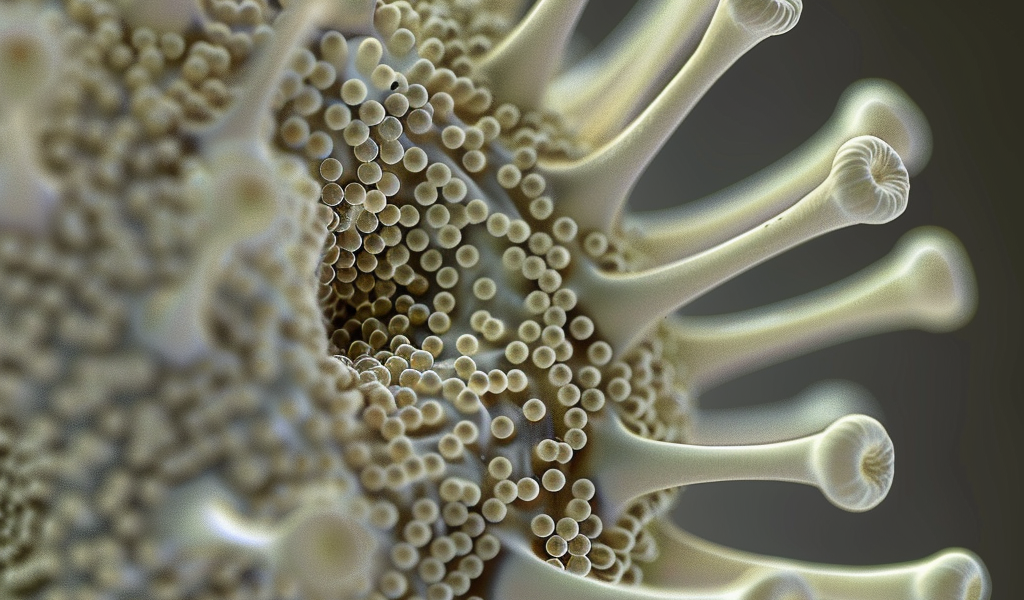Recent research published in Nature has shed light on how Streptomyces bacteria, known for producing many clinically important antibiotics, engage in competition with other bacterial species. The study, led by Qinqin Zhao and a team of researchers, uncovered a novel mechanism through which Streptomyces inhibit the growth of competing species.
Aside from the well-known small-molecule antibiotics, Streptomyces were found to produce and release antibacterial protein complexes containing a unique polymorphic toxin protein. These complexes, named umbrella particles due to their structure resembling an umbrella, were shown to effectively block the hyphal growth of specific bacterial species.
The umbrella particles were visualized using cryo-electron microscopy, revealing a structure with a stalk and a ringed crown featuring toxin repeats and lectin-tipped spokes. Streptomyces bacteria were found to encode three variations of these umbrella particles, each with distinct toxin and lectin components.
Experiments demonstrated that the supernatant containing these umbrella particles could strongly inhibit the growth of select Streptomyces species, such as Streptomyces griseus. In the case of S. griseus, exposure to the toxin led to a rapid halt in vegetative hyphal growth, highlighting the potency of these antibacterial complexes.
Unlike traditional antibiotics that act broadly, the umbrella particles were shown to mediate competition specifically among related species during the vegetative growth stage. Analyses of genetic sequences indicated that similar umbrella loci are present in a wide array of bacterial species within the Actinobacteria phylum.
These findings provide valuable insights into the intricate mechanisms of bacterial competition within soil ecosystems. Understanding how Streptomyces utilize umbrella particles to outcompete other bacteria could have implications for the development of novel antimicrobial strategies in the future.





